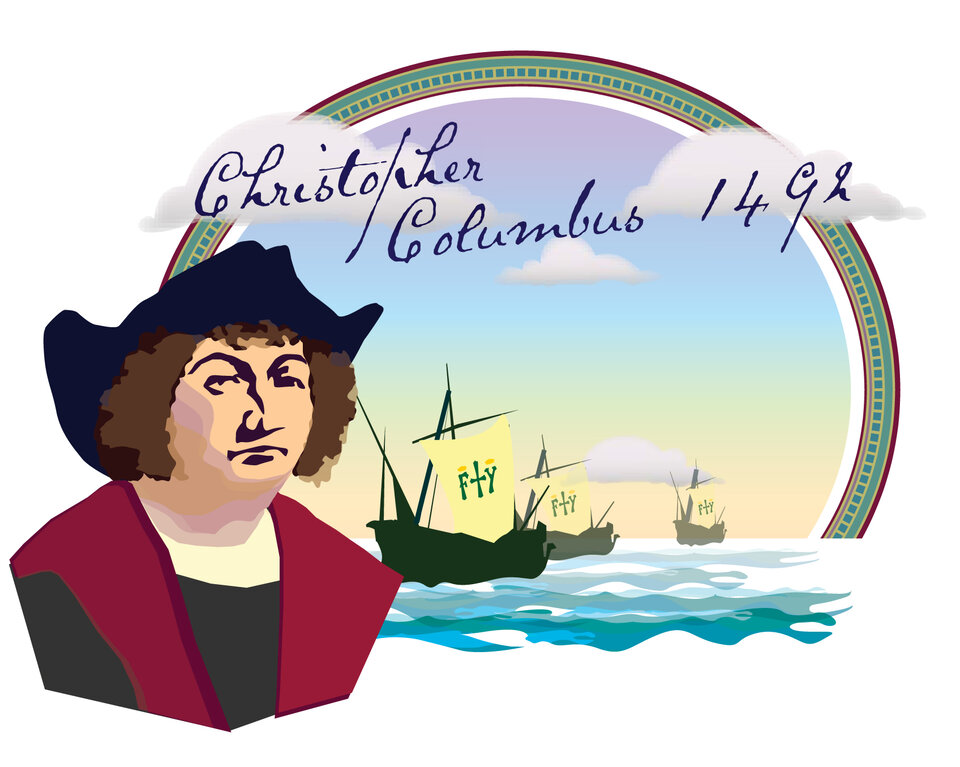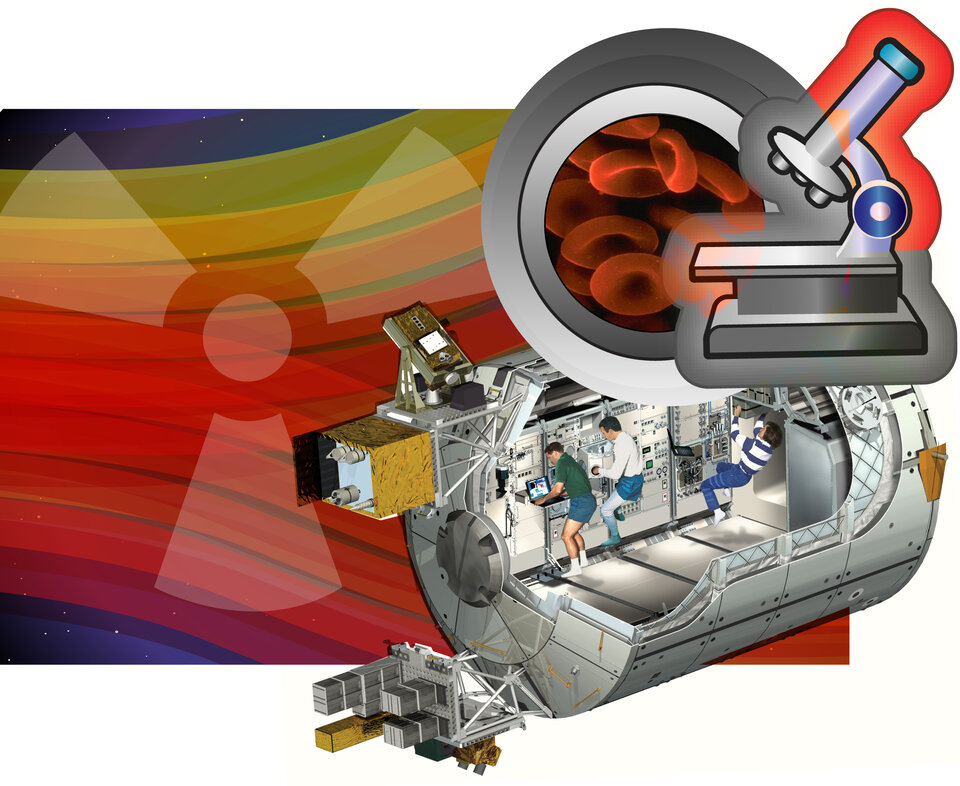Columbus: Past, present and future…
Mankind has always been fascinated by the unknown. The earliest explorers went in search of food and better homes. Later, the search for new lands and trading posts led to huge developments in ships and navigation. Now, the search for life on other planets and exploring the universe holds the same fascination as it always has done. Progress made in technology and science has enabled man to land on the Moon in the late 1960’s and early 1970’s. Today, mankind has a permanently manned human outpost in Low Earth Orbit. It is called the International Space Station, to which the European “contribution”, the Columbus Laboratory, is due to be attached in early 2008.
Past

The name Columbus has been linked to discovery, exploration and far off lands….
Christopher Columbus is believed to have been born in Genoa (now Italy). In 1492 he departed with 3 sailing ships and around 100 crew, mostly experienced seamen, to find a route to India to trade in spices.

The ships (Nina, Pinta and Santa Maria) were between 15 and 36 metres in length and had a mass of around 50 000 to 100 000 kilograms (kg).
The ships had a logo (ensign) – which showed they were sailing for King Ferdinand II and Queen Isabella of Spain.
Columbus navigated using a compass and dead reckoning (using a transverse board) which helped to plot the direction of sailing.

The ships were powered by wind and could travel at a speed up to 15 kilometres per hour (km/h), covering approximately around 170 km per day.

Food consisted mainly of salted fish stored in barrels, cheese, wine, water, live pigs and chickens. The crew needed to stop at a land mass for re- supplying and repairs.
The crew experienced various problems and hardships during their long voyage: interactions with the natives of the new lands, shortage of food supplies, disease (lack of vitamin C leading to severe scurvy) and internal conflict. Despite all these problems Christopher Columbus became known as a determined explorer who did not give in easily and opened up new trading opportunities. He was also credited as the first European to discover the Americas.
Present

Today, most of the world has been mapped and explored using satellites.
If you ask a mountaineer why he climbs a high peak, he will often say: “Because it’s there!” We have now turned our sights to the stars and what is beyond – yes, because it’s all ‘out there’. Organisations such as the European Space Agency (ESA) together with other international partners like the space agencies of the United States, Russia, Japan, and Canada, are continuing to develop the technology to reach beyond Earth also with humans.

How is this happening…?
The International Space Station (ISS) is a floating outpost in space orbiting at 400 km above Earth!
It will eventually have a mass of around 450 000 kg, a length of 108 metres and a width of 74 metres. It has been built like a jigsaw puzzle with several launches being made from Earth to take up ‘bits’ or ‘modules’ of the jigsaw and assemble them in space.
Columbus (named after Christopher Columbus) will be one of the last pieces of the jigsaw to be attached to the ISS.
Some of the other key ‘pieces of the jigsaw’ have already been launched: the Russian Zvezda service module (in 2000), and the American Destiny laboratory (in 2001).
Columbus will be Europe’s laboratory on the ISS. It will be transported in the cargo bay of the American Space Shuttle Atlantis. When attached to the ISS it will orbit Earth at 28 000 km/h!
Columbus has a cylindrical shape and measures 6.87 metres in length. Its diameter is 4.48 metres and it has an internal volume of 75 cubic metres. The reason why the dimensions become so critical is because Columbus is transported as one piece and fully equipped with the research racks. So everything has to be made very light-weight and compact.

Experiments can be performed in the weightless environment on board the ISS. On Earth everything is affected by gravitational force. Jump up and you will land on the ground – this is gravity at work!
In space gravitational force also affects everything, however as the ISS is in free fall, the astronauts float.
Why is it important to be doing experiments in a laboratory in weightlessness?
New knowledge gained in space has practical uses on Earth. Many processes, such as mixing of fluids, combustion or solidification, are influenced by gravity. Studying those processes in weightlessness reveals insights that can be used to better understand these processes on Earth. A better understanding of the combustion process in a motor can for example improve the design of cars that use less fuel and create less pollution.
What kinds of experiments will be taking place?
The experiments cover a wide range of science disciplines. Technology demonstrations and educational activities will also be performed with the help of facilities on Columbus. Not only scientists, but also industry is invited to use the ISS and Columbus. Scientific experiments are performed for example in the areas of biology and physics. Also the behaviour of the human body is investigated; the astronauts can be the subjects of this research. Many of the experiments will be carried out with the help of special experiment racks. These racks contain equipment and resources. For example, the Biolab rack is a facility to support biological experiments on micro-organisms, cells, tissue cultures and plants. By comparing what happens in conditions of weightlessness with what happens on Earth, the impact of weightlessness on all levels of an organism can be identified.

Thinking question
Can you explain why the word ‘ceiling’ and ‘floor’ are in inverted commas?
Why do you think the ‘ceilings’ and ‘floors’ of the ISS are marked with different colours and lighting?
The European astronauts taking Columbus to its new home will be Hans Schlegel and Léopold Eyharts on the STS-122 mission which will be launched from the Kennedy Space Centre in Florida early in 2008. The crew will live on board the ISS and begin to check all the equipment on Columbus making it ready for the experiments that will take place.
Thinking question
Imagine being locked up in a room measuring 5m by 6 m with someone you know well for 2 months. Make a list of all the things that could become a problem and all the things that would work well.
Future

In the coming years, effort will be devoted to using the ISS and the Columbus Laboratory for scientific experiments and for applications. Initially 3 astronauts will permanently live on board the ISS, and from 2009 onwards, the crew will be increased to 6 astronauts. The ISS and the Columbus laboratory will also help in preparing the next step of human exploration, which could be missions to the Moon and Mars. Important technologies for such missions, such as life support systems and robotics, can be tested on the ISS. Research on the ISS and in Columbus will help to better understand the medical and psychological challenges that astronauts will face when going on such long missions..
A mission to Mars would take about 9 months one way. The return trip would take even longer and the crew would have to stay on Mars for a while.
One of the experiments will look at the long-term effects of cosmic radiation on the blood cells of astronauts. This can have implications for what precautions will need to be taken for a long duration, manned mission..
Other research concerns the effect of microgravity on blood cells. There is a decrease in function of the oxygen carrying capacity of the blood after some time in space, because of fewer red blood cells. This can cause a condition called anaemia. This condition can make the crew members tired easily and less able to work as their red blood cells don't carry enough oxygen for their needs. To monitor their ability to work hard the crew do tests during exercises.
These are just some examples of the different kinds of experiments that will be done on Columbus to prepare for future exploration missions.
So the search for the unknown continues… Columbus will go a long way in helping to make the unknown more understandable.






